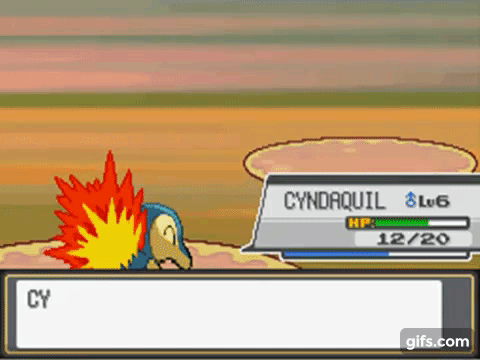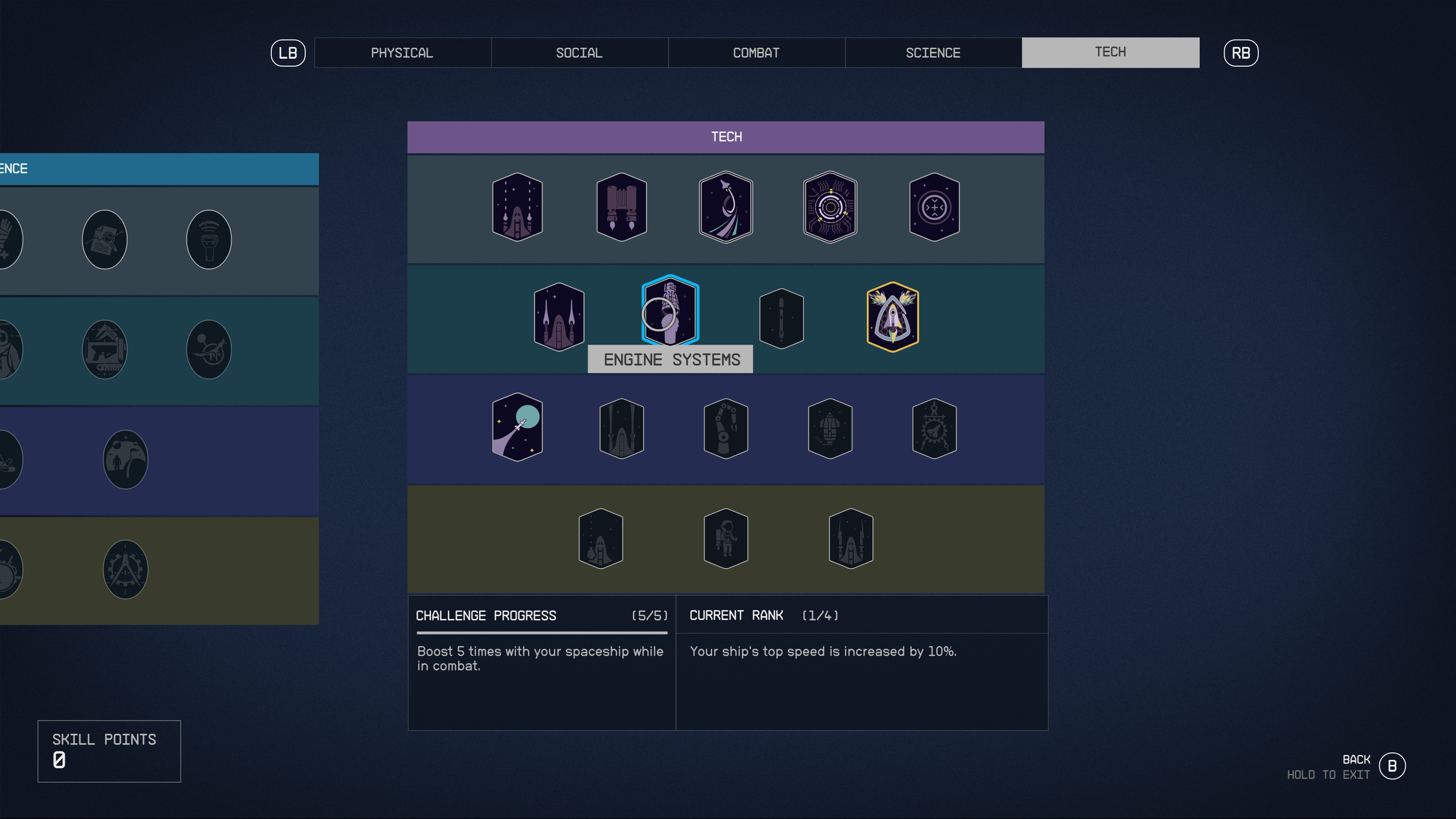Hello everyone and welcome back to another SFGD Blog. This time we’ll be taking a look at a few different RPG leveling systems, and more specifically how they relate to skills. Some light spoilers going forward for Pokemon games, Diablo 4, and Starfield.
Let’s dig in!
Quick note before we begin, games use various terminology for character abilities and character skills. I try to use whatever terminology the game uses when I talk about that game, but they’re all essentially the same thing.
The Pokemon games have the most straightforward leveling to move relationship.
A pokemon gains XP for participating in a battle where the opponent faints.
As the pokemon reaches certain levels, it is offered a chance to learn a new move.
The player has a few other other ways of manipulating the pokemon’s moves and level, but this is the primary way of doing it.
Things are a little different in Diablo 4.
A player battles and completes quests to gain XP.
As the player levels up, they unlock skill points.
They can then spend those skill points on skills.
This gives the players agency via letting them pick which skill they think is appropriate for their build.
Players can pump more points into each skill to make them as powerful as possible.
Once a skill node has one skill point added to it, the next skill within the branch will be available for unlocking.
The player can only select from a single cluster of skills initially, and, once they have spent enough skill points, a new cluster of skills will unlock.
Once the new cluster of skills are unlocked, the player can spend skill points in that cluster.
Starfield is very similar to Diablo 4, but takes it one step further.
A player battles and completes quests to gain XP.
As the player levels up, they unlock skill points.
They can then spend those skill points on skills.
Players can pump extra points into each skill to make them as powerful as possible.
When the player adds a skill point to a specific skill, they cannot add a second skill point to the same skill until they complete the challenge related to the skill’s rank.
Skills are separated into categories, and the player will need to spend a certain number of skill points within a row of a category before the next row within that category can have skill points added to it
Why are each of these interesting?
Aside from being able to see the evolution of RPG level up mechanics, they each promote slightly different types of interactions.
Pokemon
The Pokemon style promotes a more streamlined interaction. On the surface, it seems simple. When I level up Charmander in Pokemon Red to level 9, it will unlock the move Ember. But when you take into account that a team of pokemon consists of six pokemon, each with their own abilities, moves and stats, we start to see the depth in the game. You’re trying to assemble the most powerful team rather than build a single powerful character.
Neither Diablo 4 or the Starfield systems would work in Pokemon because you want the player focusing on team make up rather than min-maxing only one pokemon. While competitive players may spend weeks attempting to find the perfect base stats and training their pokemon to raise other hidden values, the game is also meant to be enjoyable by casual players, and so the intent is for it to appear simple. Pokemon moves and types operate under a simple “Rock-Paper-Scissors” style of how they affect each other. The game limits each pokemon to having four moves at a time, further simplifying what one pokemon can do. Adding multiple upgrade trees for each pokemon on a full team would go against that design choice and feel clunky.
Diablo 4
If Pokemon’s system can be described as streamlined, Diablo 4 is focused. It softly nudges the player to master a skill before diving into something completely different. If you look at the various clusters, you’ll notice that the branches are usually themed. In my case, as a necromancer, I would see one branch for darkness abilities, one for blood abilities, another for bone abilities, and so on.
Each branch has multiple skill nodes, and each of those additional nodes are upgrades to the previous skill. When the player unlocks a cluster they decide which branch they want to invest in, and once they start investing points in a branch, it’s typically better to focus on that skill branch rather than diversifying the abilities into different branches. This is because the more points a player puts into a skill, the more powerful it becomes. So, if I were to diversify within a cluster instead of doubling down, my abilities will be weaker and I might struggle more in combat as my abilities won’t mesh well together and will feel underpowered.
When the player finally invests enough points and unlocks the next cluster, the new abilities are balanced for their current level, which encourages the player to start upgrading the new cluster abilities rather than continuing to diversify the previous cluster. Taking it one step further, the branch themes occasionally work together and build on previous branches of the same theme, making it easy for the player to understand what to upgrade and eliminating a considerable amount of analysis paralysis.
If we tried to apply the Pokemon style of leveling, the player would get bored quickly because they are losing the agency of building their character. There would be no unique builds, a large draw of the game.
The Starfield style is close, but forces diversification of skills rather than allowing the player to upgrade a specific skill. This would lessen player choice to simply picking which skills would be taken first rather than letting them make truly unique builds.
Starfield
Starfield is similar to the Diablo 4 style in terms of choice but with a very different UI and overall direction. There are multiple boards because there are no classes in Starfield. In Diablo 4, the player will choose a class at the beginning of the game which will dictate their starting stats, what skill tree they have access to, and the weapons and armor they can use. In Pokemon, each pokemon has specific moves they will learn at specific levels. In Starfield, the player has access to all the skill trees from the start and can build their character however they like.
The skills in Starfield are also not all combat based unlike the other two games. This is because you can talk to people, steal, and interact in different ways to get what you want in the game. Starfield also forces the player to complete a challenge for each skill they upgrade before they can upgrade it again.
This threshold keeps the players from leveling up a bunch of times and throwing all their skill points into a couple skills. The player will need to spend time using that skill, becoming familiar with the mechanic, before they can power it up further. This achieves a couple things:
The player using the skill will naturally make them better at using it (for example increased engine power requires you to boost in combat X times, which gets you flying experience in combat and makes you better at combat in general)
This helps to compound the skill further as the player skill is improving alongside the upgraded skill
Thus when the improved version is unlocked, it feels even better because player is better and that skill is more powerful
It slows progression and forces diversification of skills
Players can’t just toss all their skill points into a couple powerful skills. They have to wait and use them in their weaker forms, which will give them more XP and have them level up more, encouraging the player to diversify their skills since they have extra skill points they can’t use in the skills they are still completing the challenge for.
This style system works well for Starfield because not all of the abilities are combat focused and the game is very broad in what the player can do. Bethesda wants the player to try different skills, thus trying different ways of playing the game. In Starfield you have challenges like the following:
Successfully pickpocket X people
Boost X times in space combat
Kill X people with pistols
Influence X people
Intimidate X enemies
There’s a large variety of actions which keep it interesting over a long period of time, which is what Starfield is all about.
If you slotted this into Diablo 4 or Pokemon all the challenges would be something like use X skill to kill X enemies, which would get pretty boring pretty fast.
Diablo 4 in particular is incredibly focused and efficient in what they do, and it wants you to upgrade the same skill back to back. Whereas Pokemon wants you to focus on your team build rather than using a certain move multiple times to unlock a more powerful version of it for each pokemon.
As you can see, there are quite a few options regarding skill systems in games that rely on leveling for their progression. You can even combine and tweak these, as seen in Monster Sanctuary, a game where you collect, raise, and battle monsters like Pokemon, using a skill tree buying system for skills and abilities. What matters is that the progression system fits the core gameplay loop rather than fighting it. Pokemon wants to be straightforward and “simple”, Diablo wants to offer many options for playing any given class without overloading the player, and Starfield wants player skill and the in-game skill to grow together while forcing the player to diversify their skills.
And that’s it for this week!
Do you think I missed anything?
I hope you enjoyed this post and I’ll see you next time. 😁
If you enjoyed this post, you’ll enjoy Signposted my game design focused newsletter. I’ll be starting a Discord, Youtube channel, and Game Design Book Club soon as well. You can sign up here to keep up to date on all the fun game design.







